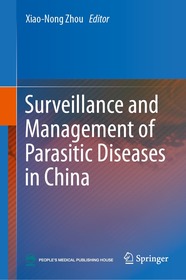
Surveillance and Management of Parasitic Diseases in China
- Publisher's listprice EUR 246.09
-
102 065 Ft (97 205 Ft + 5% VAT)
The price is estimated because at the time of ordering we do not know what conversion rates will apply to HUF / product currency when the book arrives. In case HUF is weaker, the price increases slightly, in case HUF is stronger, the price goes lower slightly.
- Discount 12% (cc. 12 248 Ft off)
- Discounted price 89 817 Ft (85 540 Ft + 5% VAT)
Subcribe now and take benefit of a favourable price.
Subscribe
102 065 Ft

Availability
printed on demand
Why don't you give exact delivery time?
Delivery time is estimated on our previous experiences. We give estimations only, because we order from outside Hungary, and the delivery time mainly depends on how quickly the publisher supplies the book. Faster or slower deliveries both happen, but we do our best to supply as quickly as possible.
Product details:
- Edition number 1st ed. 2024
- Publisher Springer Nature Singapore
- Date of Publication 14 October 2024
- Number of Volumes 1 pieces, Book
- ISBN 9789819712403
- Binding Hardback
- No. of pages315 pages
- Size 235x155 mm
- Language English
- Illustrations XVI, 315 p. 45 illus., 23 illus. in color. Illustrations, black & white 604
Categories
Long description:
This book intends to share the lessons and experiences learnt from the Chinese parasitic diseases control programme to the professionals, policy makers and researchers from other disease endemic countries. Especially, those lessons on surveillance and response have been well distilled at national level in China, where some of parasitic diseases have been and going to be eliminated, e.g. lymphatic filariasis, malaria, schistosomiasis. The book covers the concept and technologies on surveillance and response to endemic and outbreaks of parasitic diseases, as well as relevant case management and data handling.
The book includes three main parts. The first part consists of general chapters, which covers the general information on parasitic disease surveillance, the classification and application of surveillance technologies, etc. The second part of chapters cover surveillance technologies on parasites distribution, infections patterns in a region, related vectors, ecological environment elements, and the early warning and response, etc. In the third part of chapters, the concepts, methods, operating procedures, data collection, result analysis, reports and conclusions of various surveillance technologies in detail, along with the examples and guidelines of surveillance and management for parasitic infections are included. The book is likely to be of interest to the world-wide professionals, practitioners, managers and policy makers in governments or industry in the field of infectious diseases control.
More
Table of Contents:
General Introduction.- Pathogen Surveillance.- Insects Surveillance.- Surveillance of Reservoir hosts.- Epidemic Surveillance.- Symptom Surveillance.- Overview.- Surveillance and Analysis Techniques for Health Resources.- Construction of Early Warning Mechanism.- Risk Assessment Techniques.- Response Procedures.- Surveillance and Reporting System.- Construction and Implementation of Surveillance Network System.
More







